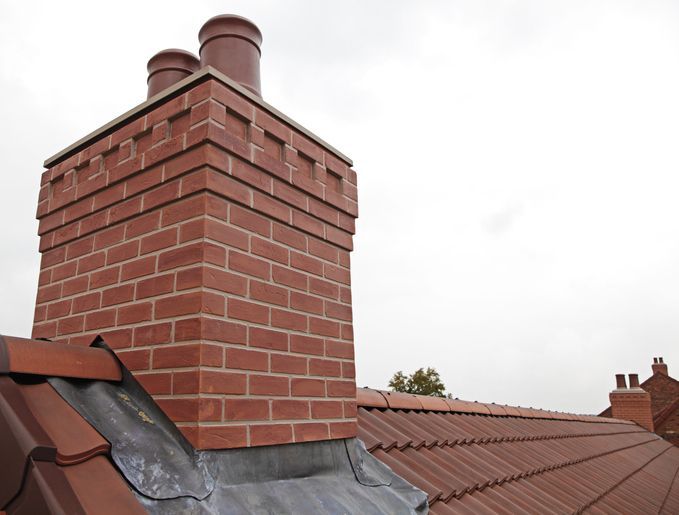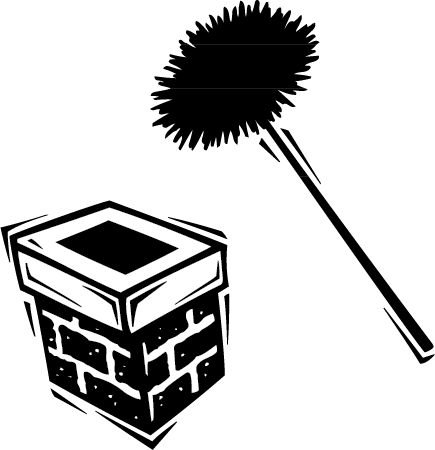How Often Do I Need to Clean My Chimney Liner?

Ensuring the safety and efficiency of your home's fireplace is as critical as it is comforting. However, an often overlooked component is the chimney liner, which plays a vital role in directing smoke and protecting the structure from heat and corrosive byproducts of combustion.
Understanding when and how often to clean your chimney liner is not just for peace of mind; it's an essential aspect of home maintenance. This comprehensive guide is designed to help homeowners and fireplace enthusiasts determine the ideal cleaning frequency, recognize the telltale signs of an overdue chimney liner, and choose the right maintenance approach for their unique circumstances.
The Heart of the Hearth: The Role of the Chimney Liner
Before we discuss cleaning schedules, it's important to appreciate the role of the chimney liner in your fireplace system. Chimney liners serve several crucial functions:
- Safety Shield: They protect combustible elements within the home's structure from heat and potential fire hazards.
- Improved Efficiency: Liners help maintain optimal airflow, which is essential for clean combustion and energy efficiency.
- Emission Regulation: By aiding in complete combustion, liners reduce the emission of dangerous gases into your living space.
Given the responsibilities on its shoulders, maintaining a clean chimney liner is not just a good idea; neglecting it can have dire consequences. Even if you perform regular maintenance of the fireplace itself, a clogged or deteriorated chimney liner can undo all your hard work and pose severe risks to your home.
How Often Should You Clean Your Chimney Liner?
The golden rule for cleaning chimneys is at least once every year. However, this recommendation is not set in stone; homeowners' unique needs may influence their cleaning frequency. Factors that can affect the required frequency of chimney liner maintenance include:
- Type of Fuel Used: The type of fuel you use in your fireplace influences the amount and type of residue left behind in your chimney.
- Frequency of Use: The more frequently you use your fireplace, the more often you'll need to clean it.
- Wood Quality: Poor quality wood can produce more creosote buildup in the liner, warranting more frequent cleaning.
- Home Location: Homes located in areas with high air pollution or heavy snowfall may need more frequent chimney maintenance due to increased residue buildup.
To determine your ideal cleaning schedule, it's best to consult a professional chimney sweep. They'll assess your fireplace usage, fuel type, and other factors to recommend the most suitable cleaning frequency for your chimney liner.
Cleaning Chess with Your Chimney: A Strategic Plan
How often should you face the soot and the sweep? The answer lies in several variables. Here's what to consider:
Types of Fireplace Usage and Frequency
Occasional Use: If you light your fireplace a few times a year, an annual inspection and cleaning might suffice.
Frequent Use: For those who have roaring fires often throughout the winter, cleaning should be biannual at a minimum.
Excessive Use: For wood stoves used as primary heating sources, a quarterly or even monthly cleaning might be necessary.
The Invisible Combustible: Your Fuel Type
Wood-Burning: A typical culprit of creosote and soot buildup, wood-burning fireplaces may require more frequent cleanings.
Gas Fireplace: While gas is cleaner, it is not immune to debris. An inspection each year is recommended; cleaning will depend on the presence of soot or corrosion.
The Anatomy of Your Chimney
Masonry Chimneys: The size and construction may dictate easier soot buildup, requiring more frequent cleaning.
Stainless Steel or Tile Linings: These may have different deposits but should not be ignored.
By aligning your cleaning schedule with these factors, you're playing a strategic game that safeguards your home against potential hazards.
Reading the Smoke Signals: When to Clean
A swift glance up the chimney can sometimes tell you everything you need to know. Visible smoke stains are a sure sign, but there are also more subtle cues:
- Thick, Heavy Soot Buildup: This can occur in as little as a week after use, reducing the chimney's efficiency.
- Foul Odors: Lingering smells are not just unpleasant; they indicate a chimney in need of attention.
- Difficulty Starting or Maintaining a Fire: Poor draft from a clogged chimney can lead to inefficient fires.
These signs are more than just mild annoyances; they're your home's way of signaling that the heart of your fireplace is not functioning as it should be.
DIY or Professional Cleaning
When it comes to chimney cleaning, you have two choices:
The DIY Route
Pros: You can save on service costs and develop a hands-on understanding of your chimney system.
Cons: Without proper equipment and training, you risk incomplete cleaning and missing potential hazards that a professional would catch.
Professional Chimney Sweeps
Pros: They offer experience, knowledge, and the right tools to ensure a thorough, clean, and safe inspection.
Cons: The upfront cost is higher than DIY, and you will need to schedule ahead to secure their services during peak seasons.
Remember, when safety is at stake, professional expertise often pays dividends.
Maintaining Your Chimney
Prevention is worth more than a pound of cure, especially when it comes to your chimney liner. Some maintenance tips include:
Fuel Quality and Sourcing
Wood: Dry, seasoned wood burns hotter and cleaner, reducing the buildup rate.
Gas: Opt for higher-quality gas to maintain a cleaner burn.
Regular Check-Ins
Implement a schedule for inspecting your chimney liner. Knowing its state can prevent costly issues later.
Layer Up: The Chimney Cap
A chimney cap is your liner's best friend, preventing water and animals from entering and causing damage.
Keeping these practices in play between cleanings will lengthen the time between professional sweeps and improve chimney performance.
Work with Piccadilly Chimney Sweep Today!
The frequency of chimney liner cleaning may vary for each homeowner, but the importance of this maintenance task remains constant. Knowing the signs, understanding your usage patterns, and maintaining your chimney with care are all part of responsible homeownership.
In ensuring that your hearth remains the cozy centerpiece of your home—a source of warmth and not woe—take the advice above and treat your chimney liner with the attention it deserves. And when it's time for that thorough clean, Piccadilly Chimney Sweep stands ready to assist, ensuring your fireplace engenders peace and comfort, and, above all, safety for you and your loved ones.

Author: Piccadilly Chimney Sweep
Since 1990, Piccadilly Chimney Sweep of Pittsburgh has provided Western Pennsylvania with top-quality chimney cleaning, repairs, and rebuilding, as well as fireplace repair and cleaning services.
